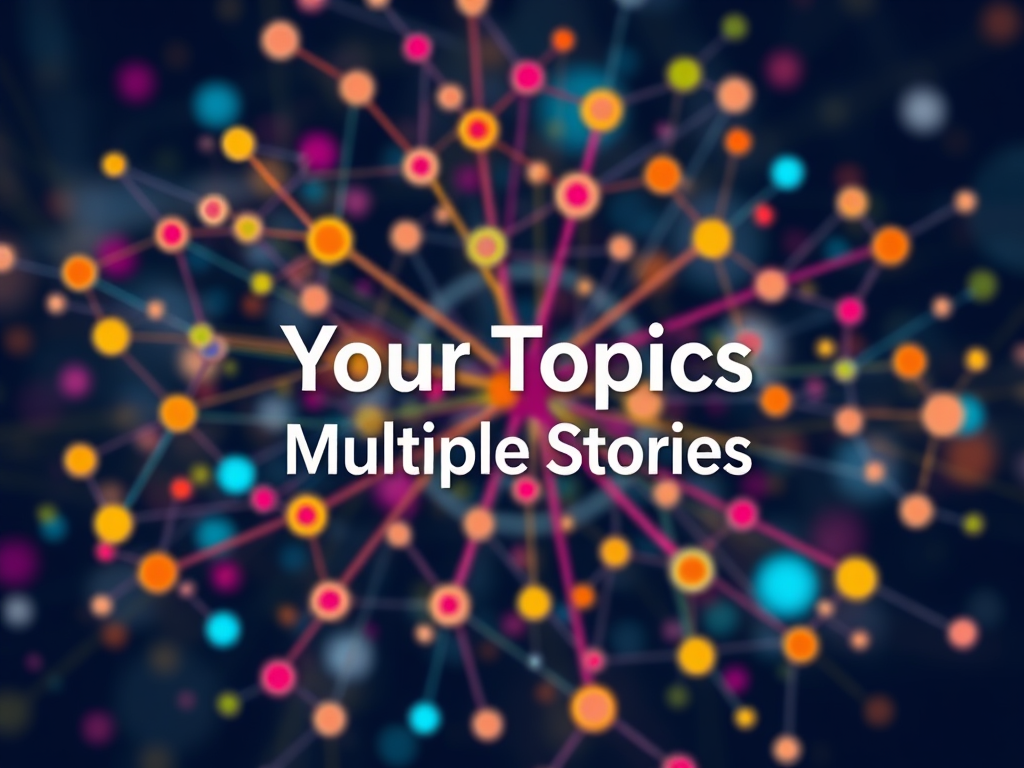The word bittersweet carries a profound emotional weight that resonates deeply with human experience. This compound adjective represents one of the most nuanced expressions in the English language, capturing the simultaneous presence of joy and sorrow in a single moment. Understanding the bittersweet meaning is essential for effective communication, especially in our digital age where emotional intelligence and authentic expression matter more than ever.
In 2025, as we navigate increasingly complex emotional landscapes through various forms of communication, the ability to articulate mixed emotions has become crucial. The bittersweet definition encompasses those moments when happiness and sadness intertwine, creating experiences that are both beautiful and poignant. From graduation feelings to farewell emotions, this powerful word helps us express what simple terms like “happy” or “sad” cannot capture alone.
What Does “Bittersweet” Mean?
Bittersweet is a compound adjective formed by combining two contrasting elements: “bitter” and “sweet.” This linguistic structure creates what grammarians call an oxymoron structure, where contradictory concepts merge to express a more complex reality. The UK pronunciation is /ˈbɪt.əˌswiːt/, while the US pronunciation variant is /ˈbɪt̬.ɚˌswiːt/.
The Dual Nature of Bittersweet
The bittersweet emotion operates within two primary semantic domains:
- EMOTION domain: Describing a mixture of sadness and happiness that occurs simultaneously
- TASTE domain: Referring to flavors that are both bitter and sweet in sensory experience
This duality reflects the complex emotional state that many people experience during significant life transitions. Unlike simple emotions, bittersweet feelings acknowledge that life’s most meaningful moments often carry both joy and sorrow.
Historical Context and Evolution
The term has evolved from its literal taste description to become a powerful metaphor for emotional complexity. In literature and everyday conversation, bittersweet has become shorthand for those poignant feelings that arise during:
- Life transitions like moving away from home
- Childhood memories that evoke both nostalgia and loss
- Ending relationships that were meaningful but necessary to conclude
- Growing up moments that mark the passage of time
What Does Bittersweet Mean in Texting or Online Communication?
In the realm of digital messaging and online communication, bittersweet in texting has taken on particular significance. The word serves multiple functions in casual conversation and social media posts:
Common Digital Usage Patterns
Bittersweet meaning text conversations often appear in:
- Heartfelt messages about life changes
- Social media posts marking endings and beginnings
- DMs discussing complex emotions
- Professional communication about departures or transitions
Examples in Digital Communication
| Context | Example | Emotional Function |
|---|---|---|
| Graduation | “Feeling bittersweet about leaving college” | Acknowledges joy of achievement with sadness of departure |
| Job Change | “Bittersweet last day at the office” | Expresses excitement for new opportunities while mourning current relationships |
| Moving | “Packing up feels so bittersweet” | Captures anticipation mixed with loss of familiar surroundings |
| Friendship | “Bittersweet watching you chase your dreams” | Shows pride coupled with personal loss |
Digital Age Adaptations
The emotional vocabulary in digital spaces has expanded to include bittersweet as a sophisticated alternative to basic emotion words. This reflects growing emotional awareness and the desire for nuanced expression in online interactions.
Why Understanding the Nuance of ‘Bittersweet’ Matters
Emotional intelligence in communication requires understanding subtle distinctions between feelings. The bittersweet definition matters because it:
Enhances Emotional Clarity
Using bittersweet demonstrates emotional maturity and the ability to recognize dual emotions. This emotional depth in communication fosters:
- Deeper connection with others
- Authentic communication about complex experiences
- Empathetic messaging that acknowledges multiple perspectives
- Meaningful conversations that go beyond surface-level emotions
Professional Benefits
In professional settings, understanding bittersweet meaning helps with:
- Farewell emotions when colleagues leave
- Retirement emotions and career transitions
- Formal writing that requires emotional nuance
- Thoughtful messaging during organizational changes
Personal Relationship Enhancement
Relationship communication benefits from bittersweet usage through:
- Heartfelt communication during difficult conversations
- Sentimental moments that require delicate expression
- Nostalgic feelings about shared experiences
- Empathetic language that validates complex emotions
When to Use “Bittersweet”
Understanding when to employ bittersweet requires recognizing specific contextual usage patterns:
Life Event Contexts
Bittersweet experiences commonly occur during:
- Graduation feelings: Celebrating achievement while mourning the end of a chapter
- Moving away: Excitement for new opportunities mixed with sadness about leaving
- Last day feelings: Final moments in familiar environments
- Childhood home visits that evoke both comfort and loss
- Marriage celebrations that mark both union and individual change
Temporal Markers
Look for these temporal markers that suggest bittersweet moments:
- “Last day”
- “Final scene”
- “Ending of an era”
- “Growing up”
- “Moving on”
- “Saying goodbye”
Emotional Indicators
Use bittersweet when experiencing:
- Mixed feelings about positive changes
- Conflicted emotions about necessary endings
- Ambivalent emotions toward growth and loss
- Contrasting feelings of joy and sadness
- Happy-sad moments that defy simple categorization
11 Beautiful Alternatives to the Word “Bittersweet”
While bittersweet is powerful, having alternatives and synonyms for bittersweet enhances your expressive language capabilities:
1. Mixed Emotions
Mixed emotions represents the most direct alternative to bittersweet. This phrase works well in casual texting and professional communication when you need to acknowledge complex feelings without using metaphorical language.
Usage Example: “I have mixed emotions about your promotion—I’m happy for you but sad to see you leave our team.”
2. A Touch of Sadness
This gentle euphemism works particularly well in heartfelt messages where you want to acknowledge difficult feelings without overwhelming the recipient. It’s perfect for empathetic messaging and meaningful communication.
Usage Example: “Your graduation speech had a touch of sadness that made it even more beautiful.”
3. Heartfelt Goodbye
Heartfelt goodbye emphasizes the emotional weight of departures. This phrase works excellently in formal writing and professional settings where you need to maintain dignity while expressing genuine emotion.
Usage Example: “We want to give you a heartfelt goodbye that reflects how much you’ve meant to our organization.”
4. Happy-Sad
This hyphenated compound captures the essence of dual emotions in a more casual, accessible way. It’s particularly effective in digital messaging and social media posts where brevity and clarity matter.
Usage Example: “Feeling happy-sad watching my daughter start kindergarten.”
5. Poignantly Beautiful
Poignantly beautiful elevates the emotional register while maintaining the sense of contrasting feelings. This phrase works well in creative writing and emotional storytelling.
Usage Example: “The sunset on our last evening together was poignantly beautiful.”
6. Emotional Rollercoaster
While more dramatic, emotional rollercoaster captures the intensity of mixed emotional responses. This metaphorical usage works well when describing extended periods of emotional complexity.
Usage Example: “This whole job transition has been an emotional rollercoaster.”
7. Sweet Sorrow
Borrowed from Shakespeare, sweet sorrow carries literary weight and poetic resonance. This phrase works beautifully in heartfelt communication and romantic contexts.
Usage Example: “Parting is such sweet sorrow, especially when we don’t know when we’ll meet again.”
8. Melancholic Joy
Melancholic joy captures the specific combination of happiness tinged with wistfulness. This sophisticated alternative works well in thoughtful messaging and reflective writing.
Usage Example: “There’s a melancholic joy in watching old home videos.”
9. Fond Farewell
Fond farewell emphasizes the loving nature of goodbyes while acknowledging their inherent sadness. This phrase excels in professional communication and formal announcements.
Usage Example: “We bid a fond farewell to our colleague and wish her well in her new adventure.”
10. Tearful Joy
Tearful joy explicitly acknowledges the physical manifestation of mixed emotions. This phrase works particularly well when describing life transitions and celebratory moments that evoke tears.
Usage Example: “The wedding was filled with tearful joy as we celebrated love while missing those who couldn’t be there.”
11. Nostalgic Moment
Nostalgic moment captures the specific quality of bittersweet experiences that involve looking back. This phrase works excellently when discussing childhood memories and sentimental moments.
Usage Example: “Walking through my old school was such a nostalgic moment.”
Choosing the Right Word Based on Context
Selecting the appropriate bittersweet alternative depends on several factors:
Audience Considerations
| Audience Type | Recommended Alternatives | Avoid |
|---|---|---|
| Professional | Fond farewell, heartfelt goodbye, mixed emotions | Happy-sad, emotional rollercoaster |
| Casual/Friends | Happy-sad, mixed emotions, touch of sadness | Melancholic joy, poignantly beautiful |
| Romantic | Sweet sorrow, poignantly beautiful, tearful joy | Mixed emotions, fond farewell |
| Literary | Melancholic joy, sweet sorrow, poignantly beautiful | Happy-sad, emotional rollercoaster |
Emotional Intensity Scale
Choose alternatives based on the intensity of the complex emotions:
- Low Intensity: Touch of sadness, mixed emotions
- Medium Intensity: Nostalgic moment, fond farewell
- High Intensity: Emotional rollercoaster, tearful joy, sweet sorrow
Communication Medium
Different platforms call for different approaches:
- Text Messages: Happy-sad, mixed emotions
- Email: Heartfelt goodbye, fond farewell
- Social Media: Nostalgic moment, bittersweet experiences
- Letters: Sweet sorrow, poignantly beautiful
Why Using Alternatives to “Bittersweet” Can Elevate Your Language
Vocabulary expansion through bittersweet alternatives offers several advantages:
Enhanced Precision
Different alternatives capture slightly different aspects of dual emotions:
- Melancholic joy emphasizes the thoughtful, reflective quality
- Tearful joy focuses on the physical response to emotion
- Sweet sorrow highlights the paradoxical nature of the feeling
- Fond farewell emphasizes the loving aspect of departure
Avoiding Overuse
Relying solely on bittersweet can make your communication feel repetitive. Synonyms for bittersweet prevent linguistic monotony while maintaining emotional accuracy.
Cultural Sensitivity
Some bittersweet alternatives may resonate better with different cultural backgrounds or generational groups. Mixed emotions tends to be universally understood, while sweet sorrow carries more literary cultural weight.
Contextual Appropriateness
Certain situations call for specific alternatives:
- Graduation ceremonies: Fond farewell, tearful joy
- Workplace departures: Heartfelt goodbye, mixed emotions
- Relationship endings: Sweet sorrow, poignantly beautiful
- Family transitions: Nostalgic moment, happy-sad
Meaning of bittersweet in English
The English vocabulary entry for bittersweet encompasses both literal and metaphorical meanings, making it a versatile addition to emotional vocabulary.
Dictionary Definitions
Bittersweet appears in major dictionaries with consistent definitions:
- Adjective (Emotion): Arousing pleasure tinged with sadness or pain
- Adjective (Taste): Having a taste that is both bitter and sweet
- Noun: A climbing plant with bright orange-red berries
Linguistic Classification
As a compound adjective, bittersweet demonstrates the English language’s ability to create new meaning through combination. This morphological structure (bitter + sweet) creates semantic richness that neither component word possesses alone.
bittersweet adjective (EMOTION)
The emotional domain usage of bittersweet represents its most common contemporary application. This usage encompasses:
Core Emotional Components
- Simultaneous joy and sadness
- Pleasure mixed with pain
- Happiness tinged with regret
- Satisfaction coupled with loss
Psychological Aspects
Bittersweet emotions reflect psychological maturity and the ability to hold contradictory feelings simultaneously. Research in emotional psychology suggests that people who can experience bittersweet feelings often demonstrate:
- Greater emotional intelligence
- Enhanced empathy
- Improved emotional regulation
- Deeper emotional awareness
Common Emotional Triggers
Bittersweet experiences typically arise from:
- Achievement with sacrifice: Succeeding at something that required giving up other opportunities
- Growth through loss: Personal development that comes from difficult experiences
- Change and continuity: Situations where progress requires leaving something behind
- Memory and reality: Comparing past experiences with present circumstances
bittersweet adjective (TASTE)
The taste domain represents the original, literal meaning of bittersweet:
Sensory Description
Tasting both bitter and sweet describes flavors that combine:
- Initial sweetness followed by bitter notes
- Balanced opposing tastes that create complexity
- Layered flavor profiles common in sophisticated cuisine
- Natural combinations found in foods like dark chocolate or certain wines
Culinary Applications
Foods commonly described as bittersweet include:
- Dark chocolate (70% cacao or higher)
- Certain wines (particularly some reds)
- Coffee with minimal sweetening
- Some herbs and spices
- Certain fruits like cranberries
bittersweet | American Dictionary
American English usage of bittersweet aligns closely with British usage, though some nuances exist:
Regional Variations
American speakers often use bittersweet in:
- Casual conversation more frequently than formal writing
- Sports contexts (bittersweet victories, defeats)
- Entertainment discussions (bittersweet movie endings)
- Personal narratives about life transitions
Cultural Context
In American culture, bittersweet often appears in discussions of:
- High school graduation
- Military deployment
- Career changes
- Empty nest syndrome
- Retirement planning
Examples of bittersweet
Real-world bittersweet examples help illustrate proper usage:
Personal Life Examples
- “Watching my daughter graduate was bittersweet—I’m proud of her achievements but sad to see her childhood end.”
- “Moving out of our family home felt bittersweet; we were excited for our new adventure but mourned leaving so many memories behind.”
- “His retirement party was bittersweet—we celebrated his well-deserved rest while grieving the loss of his expertise and friendship.”
Professional Context Examples
- “The merger brought bittersweet changes—new opportunities for growth alongside the loss of our small company culture.”
- “Launching the new product line was bittersweet, as it represented innovation but also the end of our original flagship product.”
- “Receiving the promotion felt bittersweet because it meant leaving the team I loved working with.”
Literary and Creative Examples
- “The novel’s ending was beautifully bittersweet, offering closure while acknowledging that some losses never fully heal.”
- “Her final performance was bittersweet—a triumphant conclusion to a brilliant career.”
- “The reunion was bittersweet, bringing joy at seeing old friends mixed with sadness about the time that had passed.”
Translations of bittersweet
Understanding bittersweet across languages reveals cultural attitudes toward complex emotions:
European Languages
- French: “doux-amer” (sweet-bitter)
- German: “bittersüß” (bitter-sweet)
- Spanish: “agridulce” (sour-sweet)
- Italian: “agrodolce” (sour-sweet)
Asian Languages
- Japanese: “甘苦い” (amagai) – sweet and bitter
- Chinese: “苦甜的” (kǔ tián de) – bitter and sweet
- Korean: “쓸쓸한” (sseulssalhan) – lonely but beautiful
Cultural Notes
Different cultures emphasize different aspects of bittersweet experiences:
- Mediterranean cultures often focus on the taste metaphor
- East Asian cultures may emphasize the aesthetic beauty of mixed emotions
- Germanic languages maintain the compound structure similar to English
Browse
Related terms and concepts that expand understanding of bittersweet:
Emotional Vocabulary Family
- Melancholy: Thoughtful sadness
- Nostalgia: Longing for the past
- Wistfulness: Gentle sadness mixed with longing
- Poignancy: Touching sadness
- Pathos: Deep emotion that evokes sympathy
Literary Devices
- Oxymoron: Contradictory terms combined for effect
- Paradox: Seemingly contradictory statements that reveal truth
- Irony: Contrast between expectation and reality
- Metaphor: Figurative language that creates deeper meaning
Related Concepts
- Emotional intelligence
- Mindfulness
- Acceptance
- Gratitude
- Resilience
More meanings of bittersweet
Beyond the primary definitions, bittersweet carries additional connotations:
Botanical Meaning
Bittersweet also refers to specific plants:
- American Bittersweet (Celastrus scandens): A native climbing vine
- Oriental Bittersweet (Celastrus orbiculatus): An invasive species
- Bittersweet Nightshade (Solanum dulcamara): A different plant entirely
Symbolic Meanings
In various contexts, bittersweet symbolizes:
- Life’s complexity and the coexistence of joy and sorrow
- Maturity and acceptance of life’s contradictions
- Beauty in imperfection and the value of difficult experiences
- Transition and the nature of change
Artistic and Creative Usage
Artists, writers, and creators use bittersweet to:
- Explore human complexity in character development
- Create emotional resonance in storytelling
- Express universal experiences that audiences relate to
- Add depth to simple narratives
Conclusion:
Understanding bittersweet meaning in 2025 requires appreciating both its linguistic sophistication and emotional depth. This compound adjective serves as a bridge between simple emotions and complex human experiences, offering a way to articulate the mixed emotions that characterize many of life’s most significant moments.
Whether used in digital messaging, professional communication, or creative writing, bittersweet and its alternatives provide essential tools for authentic expression. The word’s dual nature—encompassing both taste and emotion domains—reflects the richness of human experience and our need for nuanced communication.
As we navigate an increasingly complex world, the ability to recognize and express bittersweet feelings becomes ever more valuable. These emotions signal emotional maturity, empathy, and the wisdom to appreciate life’s full spectrum of experiences. From graduation feelings to farewell emotions, from childhood memories to life transitions, bittersweet helps us honor both the joy and sorrow that make us human.
The 11 beautiful alternatives to bittersweet expand our emotional vocabulary and provide precision in different contexts. Whether choosing mixed emotions for clarity, sweet sorrow for poetry, or fond farewell for formality, having multiple options ensures that our communication remains both accurate and appropriate.
In mastering the bittersweet meaning, we develop not just linguistic skill but emotional intelligence. We learn to sit with contradictory feelings, to find beauty in complexity, and to communicate with the depth that meaningful relationships require. This understanding transforms our ability to connect with others and to navigate life’s inevitable emotional rollercoaster with grace and authenticity.
The journey of understanding bittersweet ultimately teaches us that the most profound human experiences rarely fit into simple categories. They exist in the spaces between joy and sorrow, in the moments where endings and beginnings intertwine, and in the poignant beauty of impermanent things. By embracing these bittersweet experiences, we embrace the full richness of being human.

Catherine Frank, founder of BiblicalHorizon.com, shares daily prayers and Bible verses to nurture spiritual growth. With a lifelong passion for scripture and prayer traditions, she creates accessible spiritual content that resonates with both seasoned believers and newcomers seeking divine connection.



